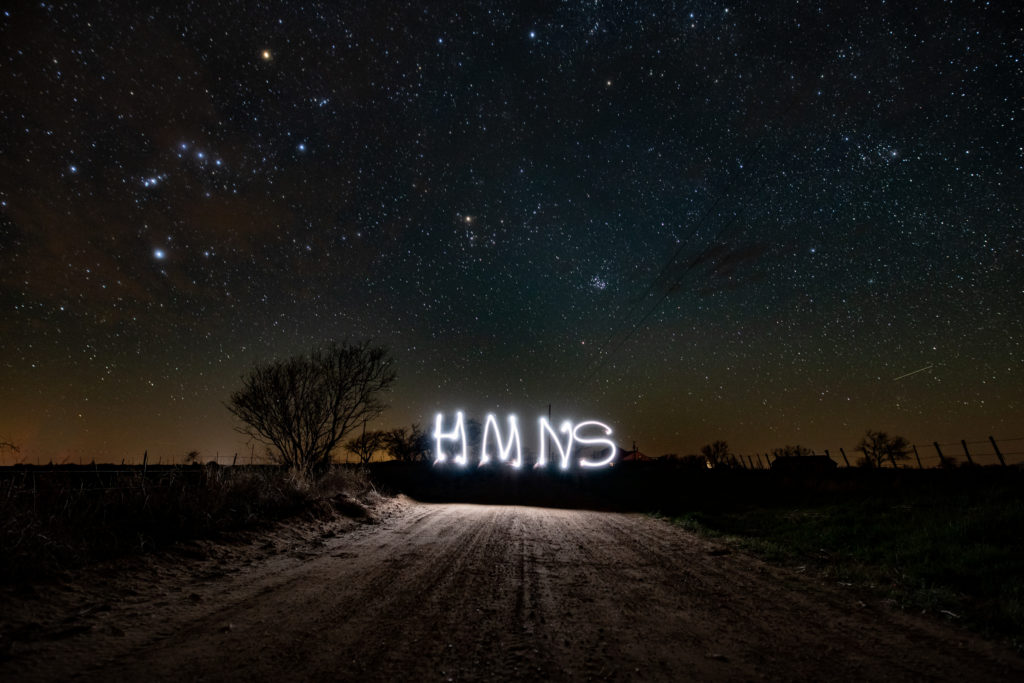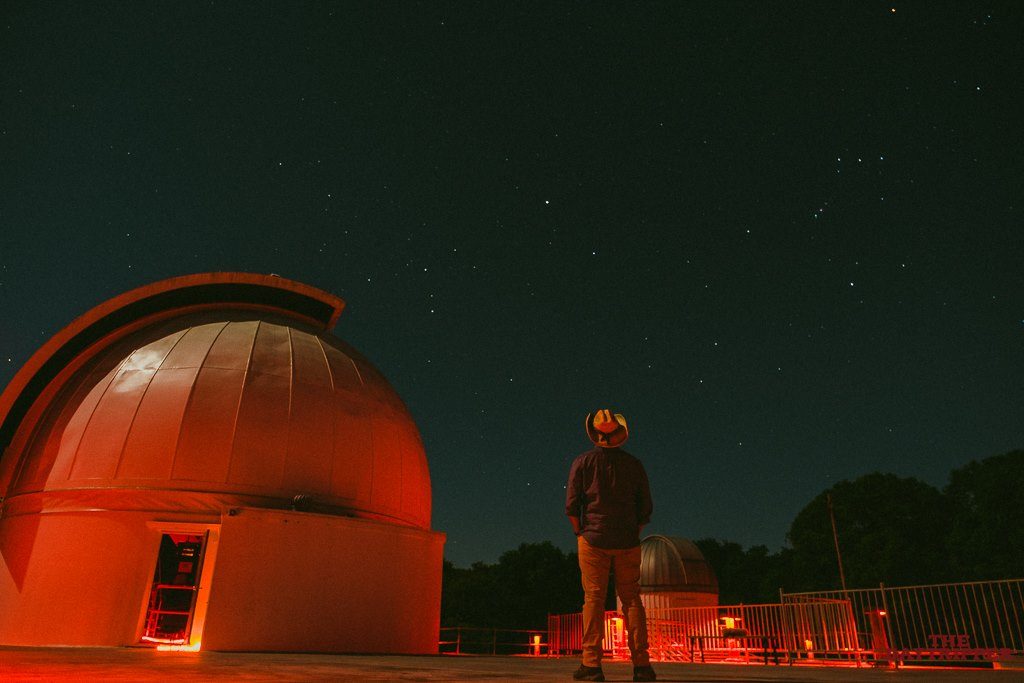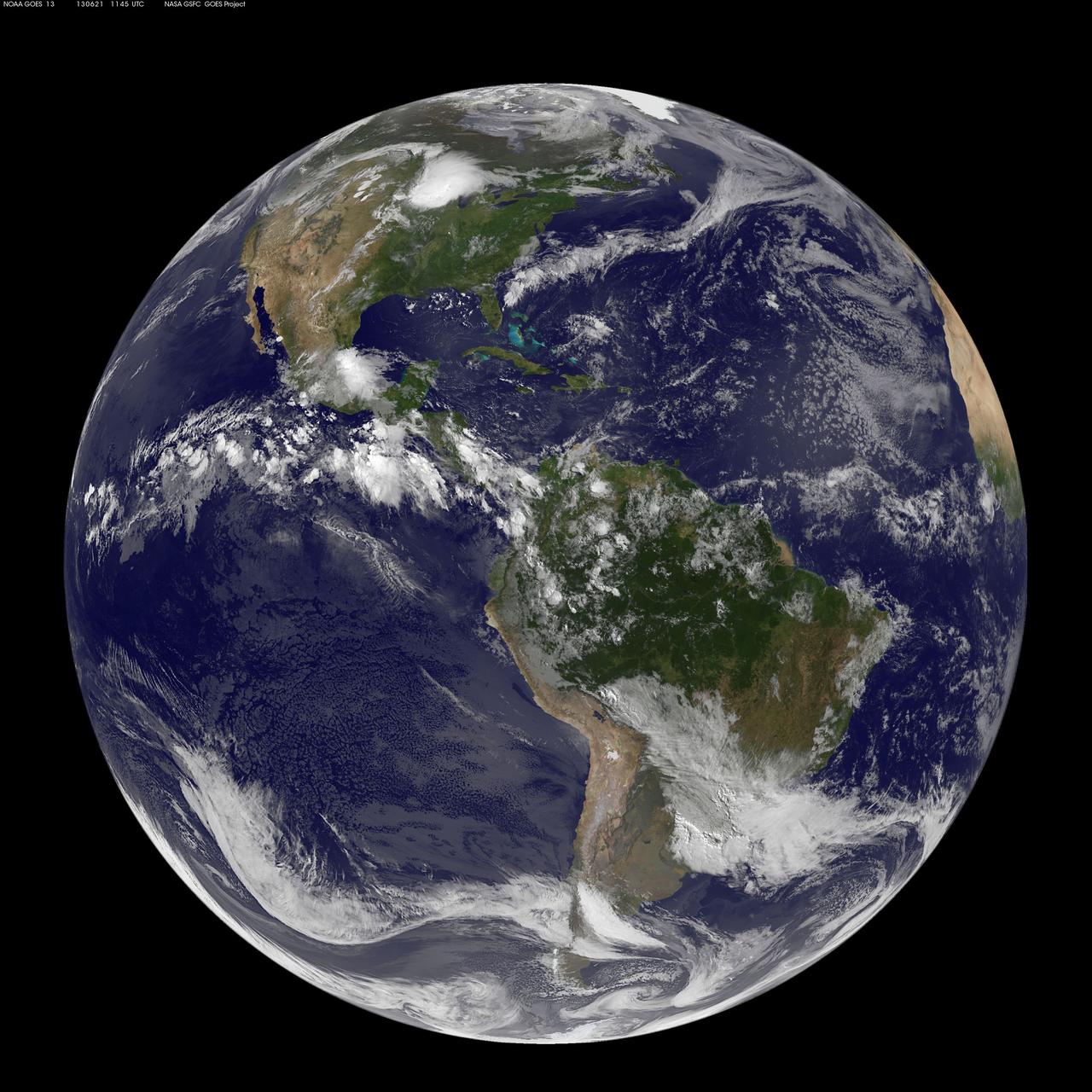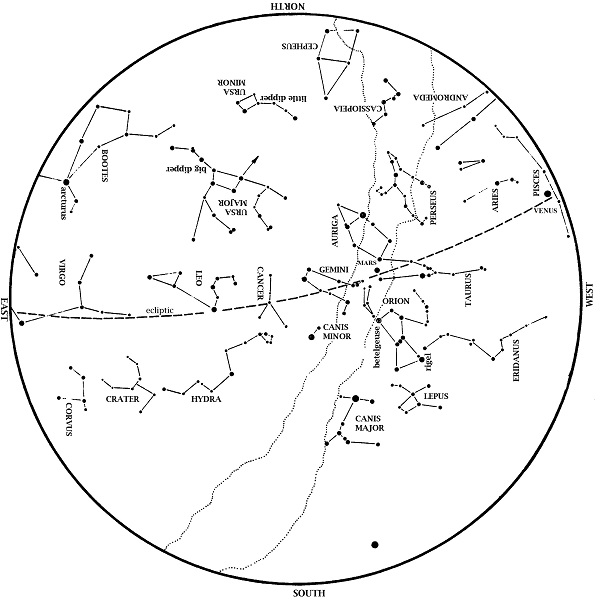
April is the last month to see the full set of brilliant winter stars which now fill the western evening sky. Dazzling Orion is in the southwest at dusk. His three-starred belt is halfway between reddish Betelgeuse and bluish Rigel. Orion’s belt points rightward to Aldebaran in Taurus the Bull. To Orion’s upper left are the twin stars Castor and Pollux, marking the heads of Gemini, the Twins. You can find Sirius, the brightest star we ever see at night, by drawing a line from Orion’s belt towards the left. Forming a triangle with Sirius and Betelgeuse is Procyon, the Little Dog Star.
Joining the winter stars are stars of spring rising in the east. Ursa Major, the Great Bear, which includes the Big Dipper, is high above the North Star on spring evenings. Extend the Big Dipper’s handle to ‘Arc to Arcturus’ and then ‘speed on to Spica’. Look for Leo, the Lion high in the sky at dusk. There are fewer bright stars in this direction because of where the plane of our galaxy is in the sky. The area of sky between Gemini and Taurus and over Orion’s head is the galactic anticenter, which means that we face directly away from the galactic center when we look in this direction. Those bright winter stars setting in the west are the stars in our galactic arm, right behind the Sun. On the other hand, if you look at the sky between Ursa Major, Leo, Virgo, and Bootes, you’re looking straight up out of the galactic plane, towards the galactic pole. There are fewer bright stars in this direction.

Mars remains in the west at dusk. Although now considerably dimmer than last July (and gradually fading), Mars still outshines most of the stars in its vicinity.
Venus is low in the morning sky. Face east-southeast at dawn and look for the brightest thing there, outshining the stars and all other planets.
Jupiter remains in the morning sky this month. Face southwest at dawn to find it.
Saturn has joined Venus and Jupiter in the morning sky, although it is much dimmer than those two. Look low in the south southeast at dawn.
Moon Phases in April 2019:

New Apr. 5, 3:50 a.m.
1st Quarter Apr. 12, 2:06 p.m.
Full Apr. 19, 6:12 a.m.;
Last Quarter Apr. 26, 5:18 p.m.

George Observatory is open to the public! Come join us any clear Saturday night!
Clear Skies!







